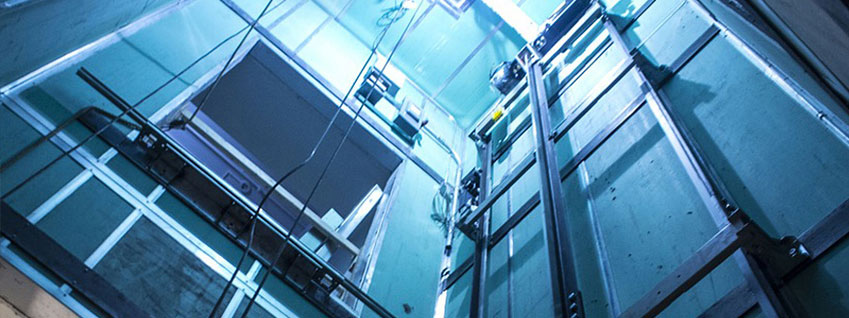Leading Lift Companies in London: Offering Top Quality Installations and Upkeep
Leading Lift Companies in London: Offering Top Quality Installations and Upkeep
Blog Article
Delving Into the World of Elevators: Common Problems Faced by Different Lift Devices
As we browse via the upright transportation systems of contemporary structures, elevators attract attention as an essential part of our lives. However, behind their smooth procedure exists a world of complex mechanisms that can often come across challenges. From hydraulic elevators to grip systems and machine-room-less designs, each lift type features its set of usual issues. Comprehending these challenges is essential for ensuring the smooth performance of these important systems. Allow's check out the complexities that underlie the operation of elevators and the possible problems that can develop, dropping light on the complex internet of lift mechanisms.
Hydraulic Elevators
Hydraulic elevators, frequently liked for low-rise buildings, use fluid pressure to control the activity of the lift vehicle (lift repair companies). This system entails a hydraulic pump pushing oil right into a cylinder, creating the lift to relocate the wanted instructions. While hydraulic lifts are recognized for their smooth and peaceful operation, they do come with their very own collection of usual problems
One widespread problem with hydraulic elevators is oil leakage. The seals in the hydraulic system can wear over time, leading to oil seepage. This not only produces a mess but can additionally influence the lift's efficiency if left unaddressed. In addition, concerns with the control system, such as defective shutoffs or a malfunctioning pump, can cause interruptions in the lift's movement.
Regular upkeep and timely fixings are necessary to ensure the smooth functioning of hydraulic lifts. By attending to these common concerns proactively, structure proprietors can reduce downtime and ensure the safety and effectiveness of their vertical transport system.
Traction Elevators
When thinking about vertical transport systems in buildings, an additional typical kind besides hydraulic elevators is the traction elevator. Grip elevators run utilizing a system of ropes and weights that relocate the lift vehicle by grasping onto the hoist ropes. This mechanism enables smoother and quicker upright transport compared to hydraulic systems.
One of the usual issues dealt with by grip elevators is rope wear. The constant motion of the ropes within the traction system can result in tear and wear with time, possibly causing the lift to malfunction or end up being hazardous for use. Regular examinations and maintenance of the ropes are vital to make certain the elevator's correct performance and safety.
An additional issue that grip lifts might come across is connected to the control system. Problems with the control system can result in concerns such as erratic movement, delays in feedback times, or even total shutdowns. Regular testing and upkeep of the control system are vital to avoid such problems and make sure the lift's dependability.
Machine-Room-Less (MRL) Elevators

Among the crucial elements of MRL lifts is the compact gearless traction machine that is mounted within the hoistway. This equipment effectively drives the elevator cars and truck without the demand for bulky equipment found in conventional traction elevators. Additionally, MRL lifts normally make use of a counterweight system to stabilize the automobile, more enhancing their energy effectiveness.
In spite of their advantages, MRL elevators might deal with obstacles associated to upkeep and fixing because of the confined room for equipment installation. Access for servicing elements within the shaft can be limited, calling for specialized training for specialists. Proper maintenance routines and regular assessments are crucial to guarantee the ongoing smooth procedure of MRL elevators.
Overloading and Weight Limit Issues
Overloading and weight limit problems are critical issues in lift operations. Elevator producers design raises with particular weight abilities to guarantee passenger safety and security and equipment longevity.
When elevators are overwhelmed, it puts too much strain on the motor, cables, and other components, possibly creating breakdowns or malfunctions. If they spot excess weight, safety systems such as sensing units and overload sensors are in location to avoid elevators from moving. Additionally, exceeding weight restrictions can bring about enhanced energy consumption and damage on the lift system.
To mitigate straining problems, constructing managers need to prominently present weight restrictions in lifts and inform occupants on the relevance of adhering to these limitations - lift repair companies. read the full info here Routine maintenance checks by qualified professionals can additionally assist guarantee that lifts are operating within secure weight specifications. By addressing overloading and pop over here weight restriction problems proactively, structure owners can improve elevator safety and security and performance
Electrical System Failings
Going beyond weight limitations in elevators can not just lead to mechanical problems yet likewise potentially add to electrical system failures within the lift facilities. Electrical system failings are a crucial concern in elevator operation, as they can trigger unforeseen shutdowns, malfunctions, or even safety dangers.
Normal upkeep and examinations are critical to identify and deal with potential electrical concerns quickly, making certain the safe and effective procedure of lift systems. By sticking to weight limits and performing routine electric system checks, structure proprietors can mitigate the risk of electrical failures in lifts.
Final Thought

Hydraulic lifts, frequently favored for low-rise buildings, utilize fluid pressure to control the activity of the elevator automobile.When thinking about vertical transport systems in buildings, another common kind apart from hydraulic elevators is the grip lift. Traction lifts operate utilizing a system of ropes and weights that move the elevator automobile by grasping onto the hoist ropes. Unlike traditional elevators that need a different machine space to house the equipment, MRL lifts integrate many of the components within the shaft, removing the need for a specialized equipment area.In my explanation verdict, lifts face common problems such as hydraulic malfunctions, grip system failures, and electric system troubles.
Report this page